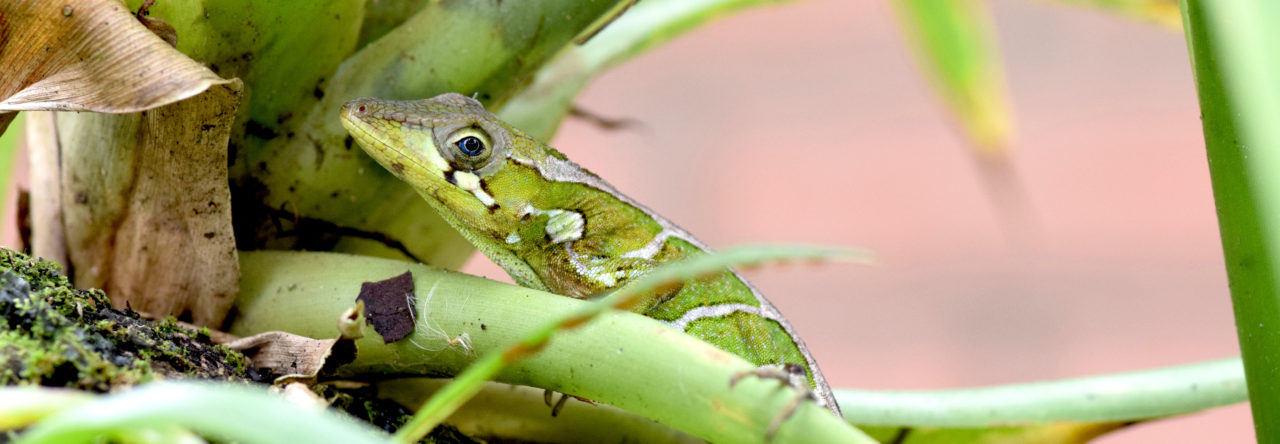
Above: Andrew Wang presenting his research on how leptin may be a mechanism underlying life-history trade-offs in green anoles.
All of the gumbo, Po boys, and beignets consumed by attendees of SICB 2017 have to go somewhere after consumption. Much of the energy contained in those delicious foods is used for very important maintenance functions in your body: metabolism, cell repair and replacement, and your immune system. What’s left over after maintenance costs can then be divided amongst other tasks, such as reproduction, movement, and wide variety of other tasks. Unlike humans, anoles do not have unlimited access to gigantic portions of gumbo, so their energetic investments require much harder decisions. Once energy from a cricket, for example, has been put into the immune system, it can no longer be used for making eggs or patrolling a territory a little bit longer. Andrew Wang of Jerry Husak’s lab at the University of St. Thomas was interested in what mechanisms are involved with anoles making these investment “decisions.” He did this by forcing allocation of resources to an energetically expensive trait (endurance running) by exercise training lizards to see what would happen to everything else that they might invest in.
Previous work showed that exercise training and diet restriction results in dramatic trade-offs with reproduction and the immune system. He suspected that what might explain this suppression was the hormone leptin, which is made by fat cells (yours make it, too). Since bigger fat cells means more leptin in the body, leptin can be thought of as a signal to the brain and body of how much resources are available for investment. Indeed, without sufficient leptin, reproduction grinds to a halt from the brain downward. Much like elite athletes, Andrew’s marathon lizards have little to no fat stores in their body, thus suggesting a role for leptin. To address this question, he supplemented half of the lizards with leptin (the rest got only saline as a control) to see if he could “rescue” immune function and reproduction. Interestingly, he found that leptin did rescue his measure of immunity, but it did not rescue reproduction. He attributes this latter finding to either (1) a lack of energetic resources to produce eggs even if there is a leptin signal or (2) the stress of the leptin injections over-rode the leptin signal in the brain where reproduction is controlled. His results suggest some very complex interactions in physiological pathways that can result in the trade-offs observed in many animal species.

Leptin is best known as a satiety hormone, but it has important roles as a signal to the body of adequate energy stores. Image from wiki.brown.edu.










